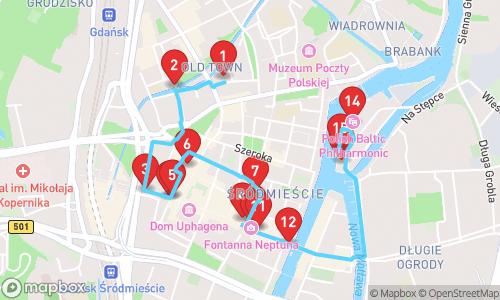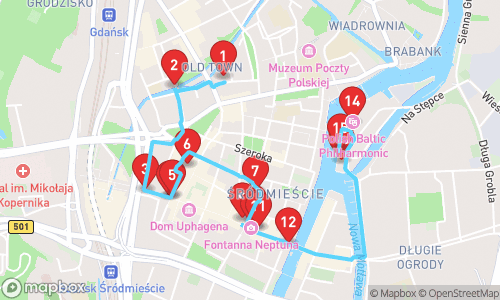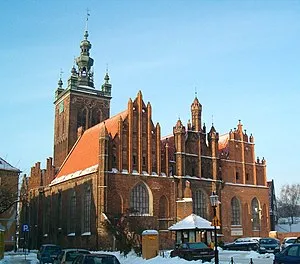
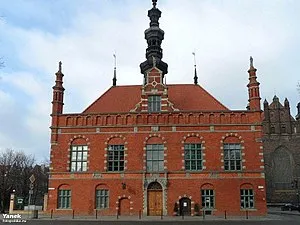
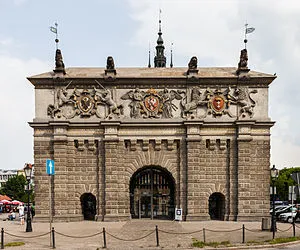
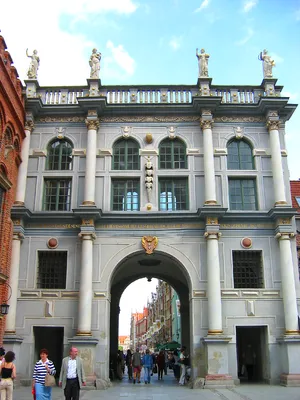
Glimpses into Gdańsk: An Enchanting Historical Odyssey

Tour Guide
Charles the Historian
Welcome to Gdańsk! On this GPS guided audio tour, we will visit 15 stops on a route of 2.95km. This tour focusses mainly on general tourism.
Locatello is an app where you can generate personal audio guided tours. Set your preferred distance, guide, language and theme, and a guided tour is created on the spot.
Walking Time
Distance
stops
Language
Tour Stops

St Catherine's Church
A Gothic-style church, the oldest in Gdańsk, features chapels, a high gable roof, vaults, and a square floor plan. It dates back to the 14th century and houses a museum, carillon, and tombs, including that of Heinrich Julius Hevelius.

Gdańsk Old City Hall
A 16th-century manierist-style brick town hall with a slightly quadrangular, two-story design and details like Attika and slender corner towers, featuring the coats of arms of Poland, Prussia, and Gdańsk on the Fries.

High Gate in Gdańsk
A 16th-century city gate, the High Gate in Gdańsk, features ornate stone carvings and Latin inscriptions, with three arch-shaped passages and three wire suspension bridges originally leading to it.

Golden Gate
A Renaissance city gate, the Golden Gate is a historic architectural structure with Dutch mannerist style, built in 1612-14 and rebuilt in 1957 after World War II damage. It features attics with figures representing ideal citizen qualities, inscriptions, and ornate architecture.
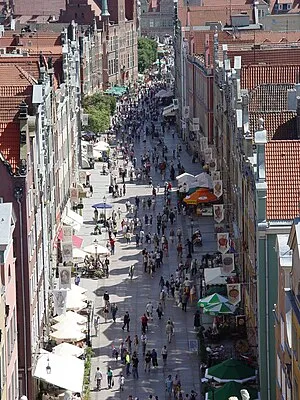
Long Lane
A pedestrian street connecting the Golden Gate, Green Gate, and Long Market within the Royal Route, featuring merchant houses, restaurants, and shops.
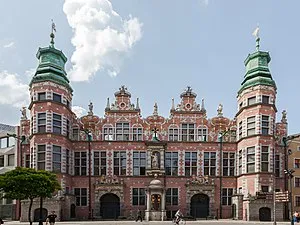
Great Armoury in Gdańsk
A building and former Waffenarsenal, the Great Armoury in Gdańsk was constructed between 1600 and 1609, likely designed by Anton van Obberghen, and is a prime example of Flemish Manierism architecture in the city.
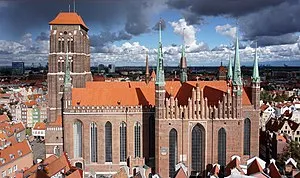
St. Mary's Basilica in Gdańsk
A stunning Brick Gothic church built between 1343 and 1466, showcasing a mix of architectural styles from Hanseatic cities around the Baltic Sea and Flanders/Netherlands.
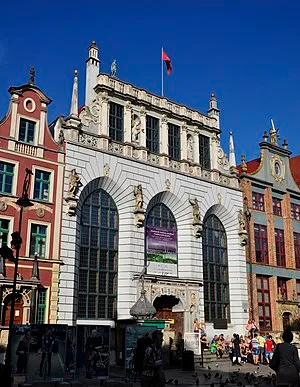
Artus Court
A Gothic hall with ornate furniture, paintings, and tapestries, serving as a former meeting place for merchants and a centre of social life, now a branch of the Gdańsk History Museum.

Gdańsk Main Town Hall
A historic Rathaus, built in the Gothic-Renaissance style, housing the History Museum of the City of Gdańsk, with oldest fragments dating back to 1327-1336 and has been expanded and rebuilt over the centuries.
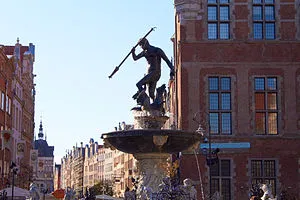
Neptune's Fountain
A historic fountain, a mannerist-rococo masterpiece, and one of the most distinctive landmarks of Gdańsk, featuring a statue of Neptune made from bronze and standing on a stem of black tuff.
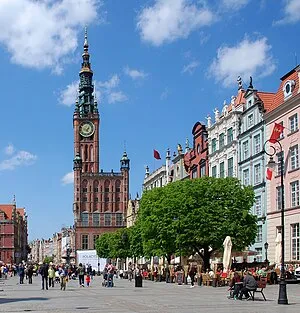
Long Market
A historic square, established in the 13th century, initially as a merchant road, and later becoming the city's main artery. It forms part of the Royal Route, serving as the road for solemn entrances of Polish monarchs and hosting festivities and executions throughout its history.
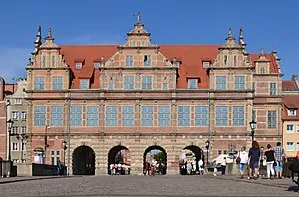
Green Gate
A water gate, the Green Gate is a 16th-century masterpiece built as the formal residence of Poland's monarchs, inspired by Antwerp City Hall and showcasing Flemish architectural influence, now housing the National Museum in Gdańsk.
Audio Preview
30 sec
National Maritime Museum in Gdańsk
A national museum, the National Maritime Museum in Gdańsk is dedicated to the gathering, researching, and preserving of artifacts and documents on ship transport, international trade, fishing, and maritime culture. It showcases Poland's maritime history and economy through the ages.
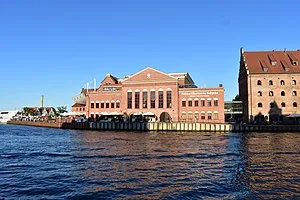
Polish Baltic Philharmonic
A concert hall, the Polish Baltic F. Chopin Philharmonic is a public building that houses the Baltic Philharmonic Hall, featuring a neo-Gothic façade and a complex of seven segments, including a main concert hall and chamber music hall.

Sołdek
A retired Polish coal and ore freighter, SS Sołdek is the first seagoing ship completed in Poland since World War II and a category: maritime museum.
Download App
Experience this tour and many more with our mobile app. Available for iOS and Android.
Audio Preview
Tour Map
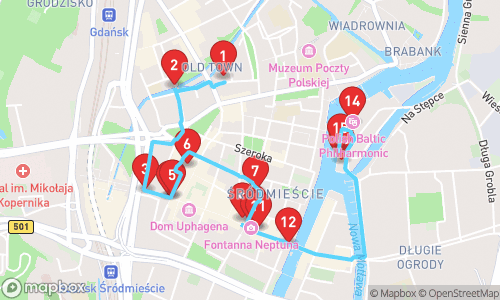
Quick Facts
- ✓GPS-guided navigation
- ✓Professional audio narration
- ✓Offline maps available
- ✓Premium content included
Why Choose This Tour
Expert Local Guide
Narrated by Jenny Multilingual, specializing in general tourism
Flexible Timing
Take the tour at your own pace, any time of day
